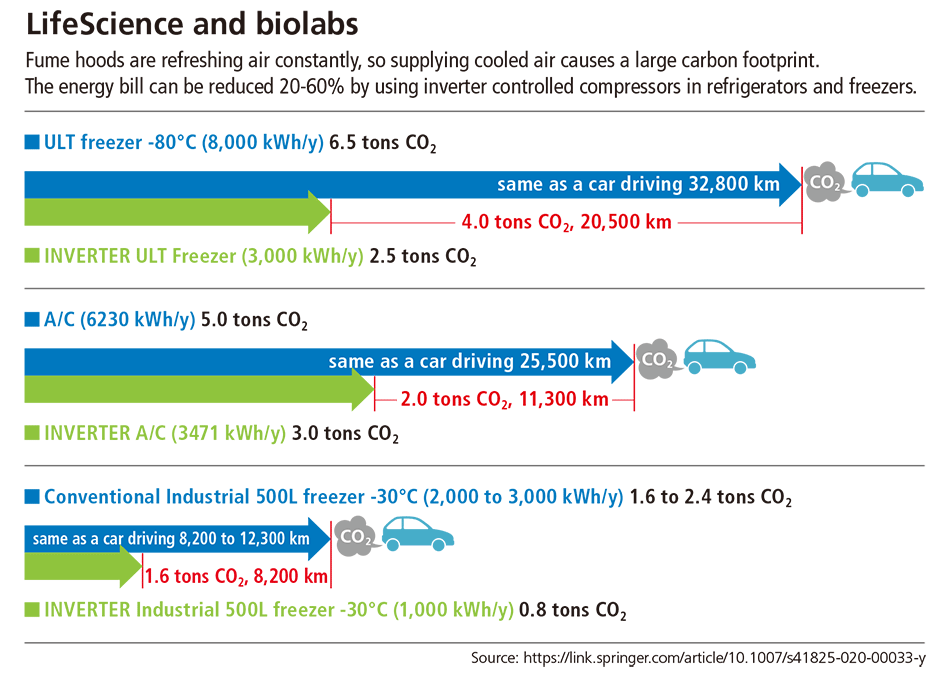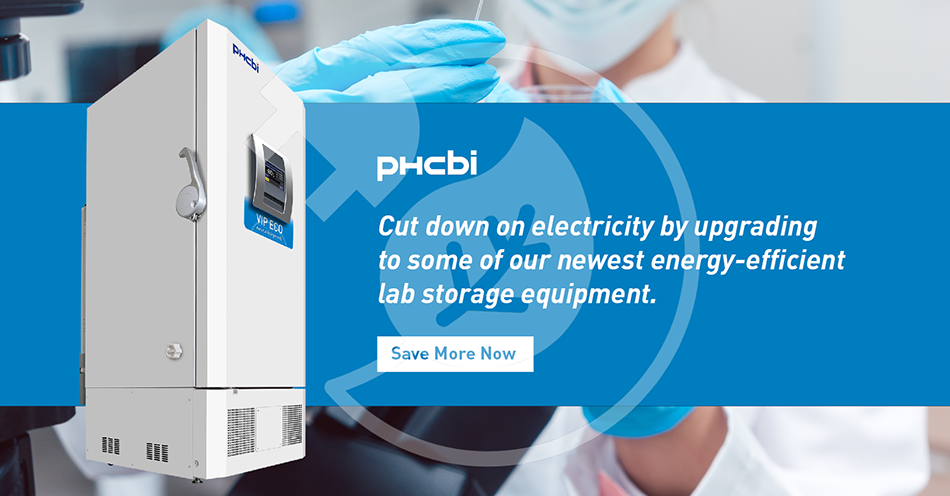What are the benefits of having inverter technology in laboratories?
Using inverter technology is proven to lower CO2 emissions. CO2 is the most produced greenhouse gas. It can lead to rising sea levels that pose a very real threat to some island nations and densely populated river delta areas. Contributes to a sustainable future in all regions. Inverters contribute to a large cut in CO2 exhaust. The largest energy consumers in laboratories are HVAC, fume hoods and 24/7 cold storage solutions. In an effort to reduce CO2 exhaust, A/C and cold storage each can make a large contribution by switching to models with inverter-controlled compressors. An 800 kWh reduction for a single unit means half a ton reduction.
Scope of Applications:
Inverters are found in eco-friendly models of ACs, refrigerators, freezers and HVAC systems, but also in EV cars and other high-end products. For applications that make use of liquid (compressed) gas refrigerants in a cooling loop, the inverter regulates the input frequency to the compressor. In doing so, the input becomes real-time adjustable.
How do inverters work?
In a reciprocating compressor the action of the piston inside a cylinder causes the refrigerant to be compressed. The movement of the piston creates a vacuum inside the cylinder that draws the refrigerant in. The refrigerant is then compressed before flowing out of the cylinder to begin the refrigeration cycle.
In a conventional reciprocating compressor the piston will always be working at full speed when the compressor is on to deliver maximum cooling capacity. Normally the load in the freezer is not high enough to need the maximum cooling capacity so the piston movement is excessive and energy is wasted. An inverter compressor can operate at different speeds depending on the ambient and load conditions. At times when the freezer only needs a minimal amount of cooling due to lower ambient temperatures, such as overnight, the compressor will move at a slower speed using much less energy.

The start-up of a compressor is the most energy consuming part of the cycle. The ability of the inverter compressor to run at lower speeds has the advantage that the compressor will not turn off and on as often thus saving energy and reducing wear.
The intelligent control of the inverter compressor optimizes running speed for the conditions. When the inverter compressor is running as normal it will stay on for longer than a conventional compressor but at a minimal speed. This reduces the power consumption and keeps freezer temperatures stable. When the door has been opened the compressor will run at maximum capacity to bring the temperature inside the freezer back down to set value quickly before resuming a normal cycle again.
Non-inverter models run at a single speed, turn off, then turn on again. As the start-up of a compressor requires the most energy, repeated ON and OFF cycling causes noise, speeds up product wear out, and frequent energy consumption peaks.
Why using inverter technology can help laboratories everywhere
A conventional laboratory uses up to 1000 kWh per m2 per year. The biggest share of that is used for ventilation, temperature adjustment
and cooling. In warm climates and R&D that requires 24/7 frozen storage, the power bill can have a significant impact on the available budget. Inverters enable energy consumption cuts of up to 60% per unit. For a laboratory with 10 refrigerators, running costs would be the same as for 4 conventional units.

The Proposed Solution
To reduce the impact of CO2 emissions on the environment, transitioning to inverter controlled compressors in refrigerators and freezers can be a start. When looking for energy-efficient laboratory equipment, inverters are one of the key technologies to look for in helping labs cut down on electricity.
